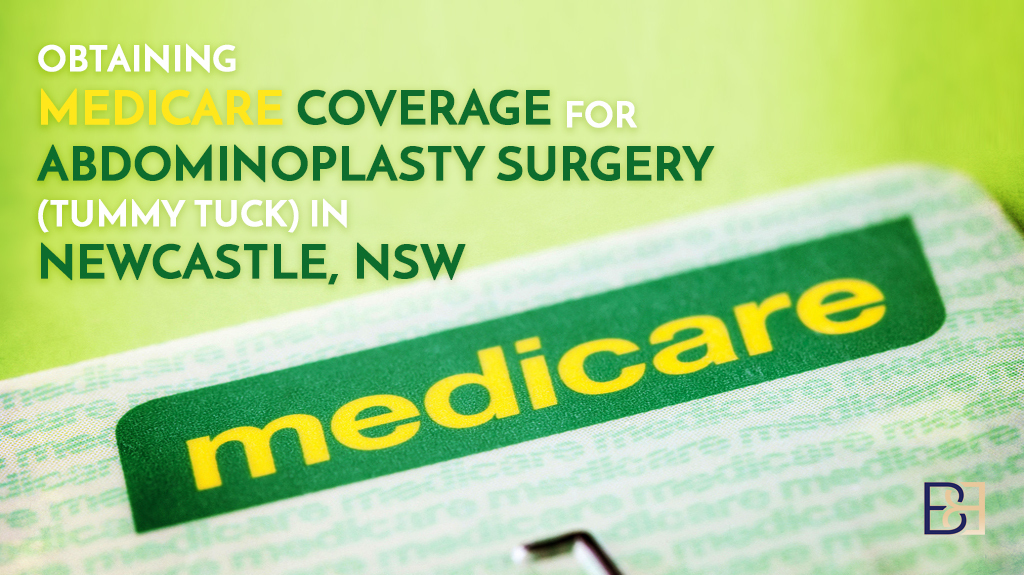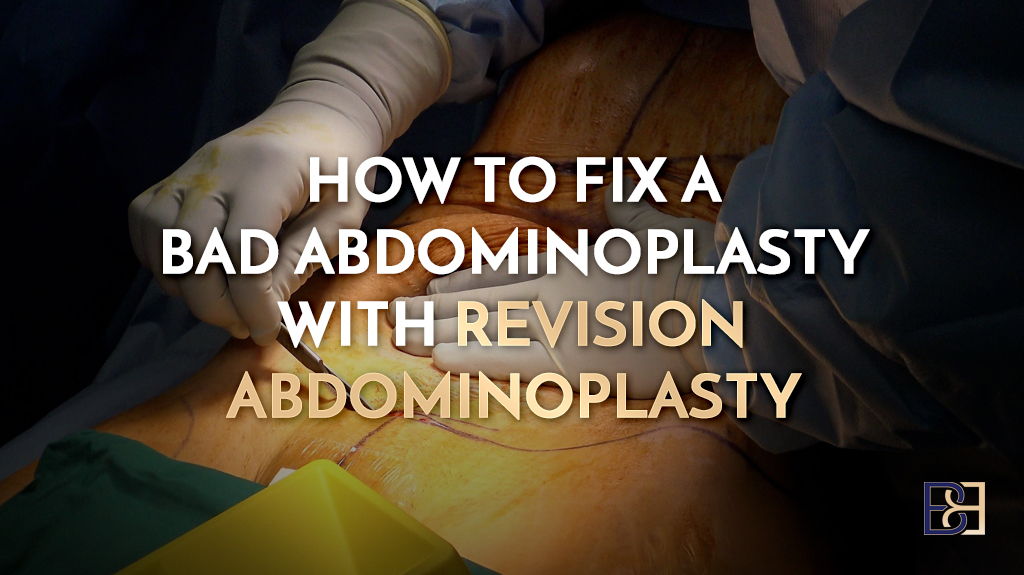Both Fleur-de-Lis (FDL) abdominoplasty and Caesarean (C) Section require incisions made in the lower abdomen. FDL corrects separated abdominal muscles and removes **, loose skin and stubborn fat that may be present after pregnancy, while a C-section is the surgical delivery of a baby. While it is technically possible to undergo FDL immediately following delivery or even simultaneously, I strongly suggest waiting at least 12 months post-pregnancy.
One common question I have encountered during my 15 years of experience performing abdominoplasty surgery is whether one can get Fleur-de-Lis immediately after or at the same time as a C-section. The short answer is yes, you can; however, I advise against it. Here’s why.
Book your appointment online now
After your successful C-section, you should take some time and let your body heal as you bond with your newborn baby. Both C-section and Fleur de Lis are major surgeries, both of which require physical and mental preparations and lengthy recovery time.
Furthermore, like a C-section, FDL is highly invasive, requiring extensive incisions, increasing the risk of developing complications.
Below, I have detailed crucial information that is useful when considering Fleur-de-Lis abdominoplasty after C-section surgery.
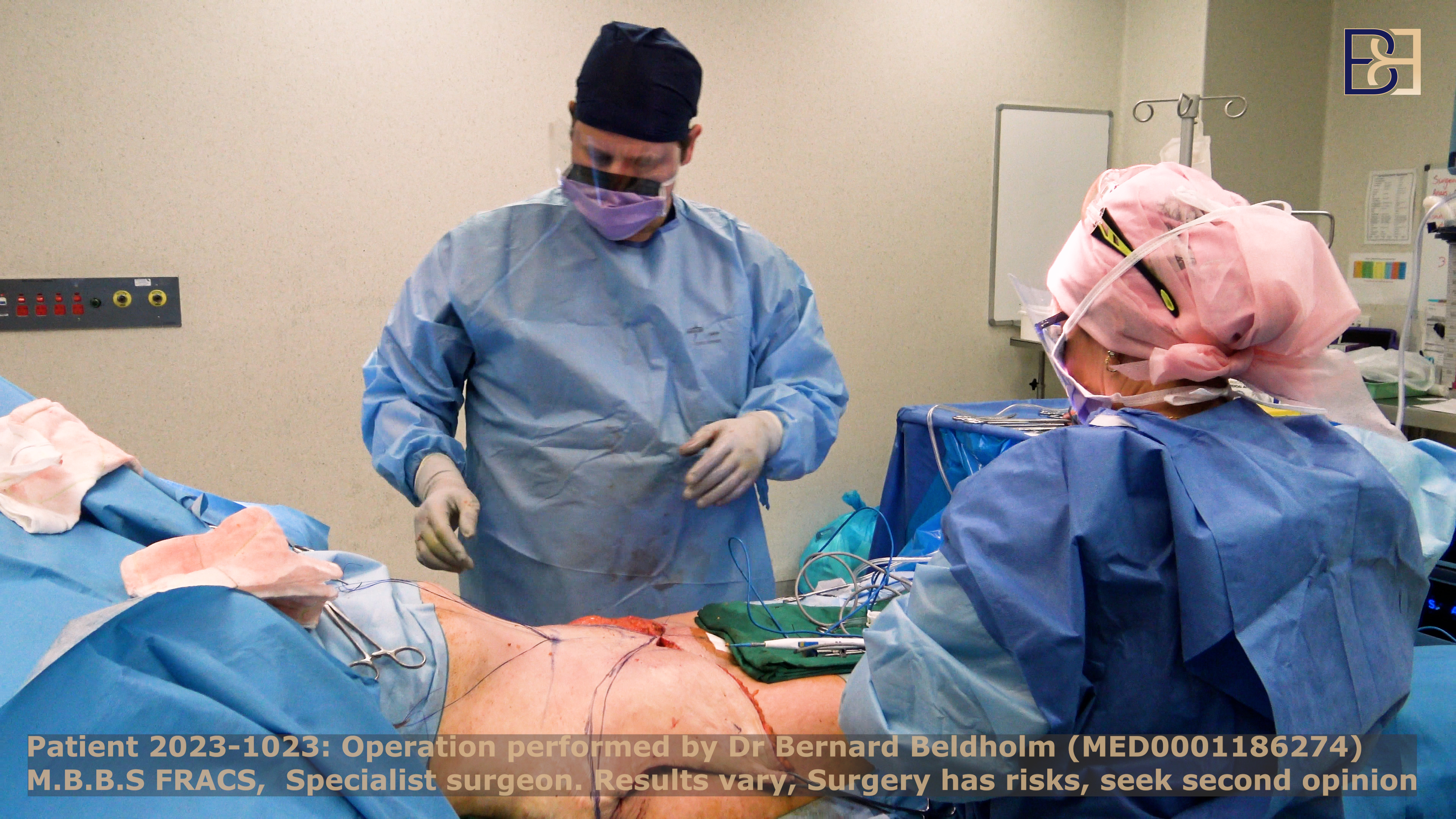
Surgical Options After C-Section
I perform several abdominoplasty procedures to help you get rid of the extra abdominal skin and stubborn fat after your C-section. Because there is no one-option-fits-all solution for getting rid of ** skin and stubborn fat after losing baby weight, the ideal option depends on the amount of excess skin and fat that needs to be removed, your goals, and other factors. During our one-on-one consultative session, I will determine your most suitable medical treatment option, and together, we will devise a game plan that works best for you.
During our conversation, we will discuss the standard surgical options to consider after your C-section, which include;
Complete/ Full Tummy Tuck (Abdominoplasty)
One of the most common body contouring procedures after weight loss or pregnancy, a tummy tuck removes the excess skin and fat from the lower abdominal area to create tighter, smoother contours and repairs separated abdominal muscles (diastasis rectus) when needed. Removing excessive abdominal skin not only has aesthetic benefits but can also resolve conditions affecting normal bodily functions.
What Is The Cost Of A Full Tummy Tuck?
The average cost of a full abdominoplasty in Newcastle, Australia is between $12,000 to $15,000. However, various factors, such as your health condition, facility fees, and required medical tests, will determine the cost of your full tummy tuck.
How Long Does A Full Tummy Tuck Last?
Your procedure’s results are permanent and can last a lifetime. However, you should carefully follow the post-surgery care guidelines I’ll provide. Also, adopt a healthy lifestyle, eat well, exercise, and manage your weight for the longest-lasting results.

How Much Weight Do You Lose After A Full Tummy Tuck?
Remember, a tummy tuck is not a weight-loss procedure. Rather, it is used to remove excess skin and fat left behind after massive weight loss through diet, bariatric surgery, or pregnancy. On average, patients lose about 2 kilograms after a tummy tuck. However, this varies, with the main determinant being the amount of excess skin and fat removed.
Is A Full Tummy Tuck Painful?
You will not experience pain during surgery as you will be under general anaesthesia, which means you will not be awake. However, you should expect to feel discomfort after your procedure. Your pain will be managed while in the hospital, and you will go home with a prescription for pain medication.
Full Abdominoplasty Risks
Some of the common full tummy tuck (abdominoplasty) risks are poor wound healing, infection, numbness, pain and infection. I must also mention that the chances of visible incision scars are high because of the long incision I’ll make along your waistline.

Mini Tummy Tuck (Abdominoplasty)
A Mini Tummy Tuck ** minimal redundant skin tissue on the lower abdominal region and separated abdominal muscles (diastasis recti) that may result post-pregnancy.
A mini tummy tuck is the least invasive abdominoplasty procedure, involving an incision on the lower abdomen along the bikini line.
Benefits of a Mini Tummy Tuck Over Full Abdominoplasty
- Shorter surgery
- Shorter recovery time
- Less visible scarring
- Less expensive
- Less invasive
Mini Tummy Tuck Risks
- Numbness
- Discomfort
- Swelling
- Scarring
- Infection
Cost of A Mini Tummy Tuck
A mini tummy tuck is the least invasive option; its cost ranges between $7,000 and $12,000. Various factors, such as surgical fees, will affect the final price. After our consultation, you will receive a personalised quote for your mini tummy tuck.
What Qualifies as A Mini Tummy Tuck?
A mini tummy tuck is a procedure that ** less excess abdominal skin. Such cosmetic procedures require small incisions that do not affect the belly button. They are also less invasive and do not include correcting separated abdominal muscles. Mini abdominoplasty surgery is associated with the following risks;
- Seroma
- Necrosis
- Infection
- Scarring
- Numbness
- Swelling
How Long Does A Mini Tummy Tuck Last?
The results of your mini tummy tuck will be permanent and can last a lifetime. However, you should carefully follow the post-surgery care guidelines and maintain a healthy lifestyle, including eating a healthy diet, exercising regularly, and managing your weight.

Extended Tummy Tuck (Abdominoplasty)
Extended abdominoplasty requires a horizontal incision running from past the hip on each side. This procedure is more invasive than a full tummy tuck (abdominoplasty); therefore, I will have to make a more extended incision.
An extended tummy tuck removes more loose skin and excess fat from your abdomen, repairing torn or loose muscles, repairing diastasis recti (separated abdominal muscles), and stretch marks. Its flip side is that it has various risks, such as prolonged swelling, infection, blood clots, easily visible incision scars, and anaesthesia.
This procedure is ideal if you have significant excess skin on your entire abdomen, hips, and pregnancy. You are more likely to be a suitable candidate if you’ve been pregnant multiple times, as the surgery removes excess skin left behind throughout this period.
What is the Cost of An Extended Tummy Tuck?
An extended tummy tuck procedure involves removing abdominal skin laxity and skin flanks on your back. This makes it more invasive and will cost more. The average price of an extended tummy tuck is between $15,000 and $18,000.
How Much Weight Does an Extended Tummy Tuck Take Off?
Most patients lose about three to four kilograms after body contouring surgery. However, this is an estimate. The amount depends on the amount of excess skin and fat removed during your extended abdominoplasty.
What Is the Recovery Time for Extended Abdominoplasty?
It will take you six months to a year to see the full results. An extended tummy tuck ** more abdominal skin laxity after excess weight loss and requires more recovery time than a full or mini abdominoplasty. I will provide you with personalised post-surgery guidelines to help you know when to resume normal activities without interfering with results.
How Painful Is an Extended Tummy Tuck?
You will not experience pain during surgery as you will be under general anaesthesia, which means you will not be awake. However, you should expect to feel discomfort after your procedure. You will receive pain management while in the hospital and go home with a prescription for pain medication.
How Long Does An Extended Tummy Tuck Last?
The procedure’s results can last you a lifetime if you follow the post-op guidelines I’ll provide, live a healthy lifestyle, and maintain a stable weight.
Extended Abdominoplasty Risks
Some common risks of these body contouring surgeries include infection, seroma, swelling, numbness, asymmetry, hematoma, pulmonary embolism, and umbilical necrosis. During our 45-minute consultation, I’ll guide you on minimising these risks.
VASER Lipo-Abdominoplasty

VASER Lipo-abdominoplasty is a comprehensive procedure that combines standard abdominoplasty with liposuction. The process involves inserting a tiny cannula tube through the made incisions to suction the saturated body fat. I will make a horizontal incision along the umbilicus area to reduce the chances of visible scarring.
This option supplements the normal tummy tuck (abdominoplasty) procedures to ensure firmer abdominal muscles and the effective removal of excess fat and skin. The main purpose of including liposuction is to remove excess fat.
You should wear a compression garment for about 6 weeks as you recover from the procedure. This compression garment is crucial in helping you minimise swelling. A study by the National Library of Medicine shows that “(c)ompression garments are regularly worn during exercise to ** physical performance, mitigate fatigue responses, and ** recovery. However, evidence for their efficacy is varied and the methodological approaches and outcome measures used within the scientific literature are diverse.” You will also have two drain pipes in your lower abdomen for about a week to facilitate the removal of body fluid.
Lipo-abdominoplasty also has risks, such as swelling, pain, scarring, bruising, discomfort, and numbness. You should consider it if you have excess protruding skin and fat in your lower abdomen. I do not recommend it for obese patients.
How Long Do the Results of a Vaser Lipo-Abdominoplasty Last?
Your results after a VASER liposuction will last a lifetime if you follow the post-op guidelines I’ll provide. This is because fat doesn’t regrow in the removed areas, and maintaining a good and stable weight is also very important.
How Much Does Vaser Lipo-Abdominoplasty Cost in Australia?
The cost of VASER Lipo-Abdominoplasty varies depending on the amount of fat to be removed and the areas to be treated. Other factors, such as hospital and physician fees, also determine the price. My estimate is between $9,000 and $15,000.
What Are the Downsides of Vaser Lipo-Abdominoplasty?
One common side effect of VASER Lipo-Abdominoplasty is inflammation, which is usually mild but can be severe for some patients. Other major downsides include asymmetry, skin laxity, scarring, numbness, seroma, and hematoma.
Benefits of VASER Lipo-Abdominoplasty
VASER Lipo-Abdominoplasty outshines traditional methods in the following ways;
- Less painful healing
- Better skin tightening
- Minimally invasive
- Better contouring results
- Reduced chances of blood loss
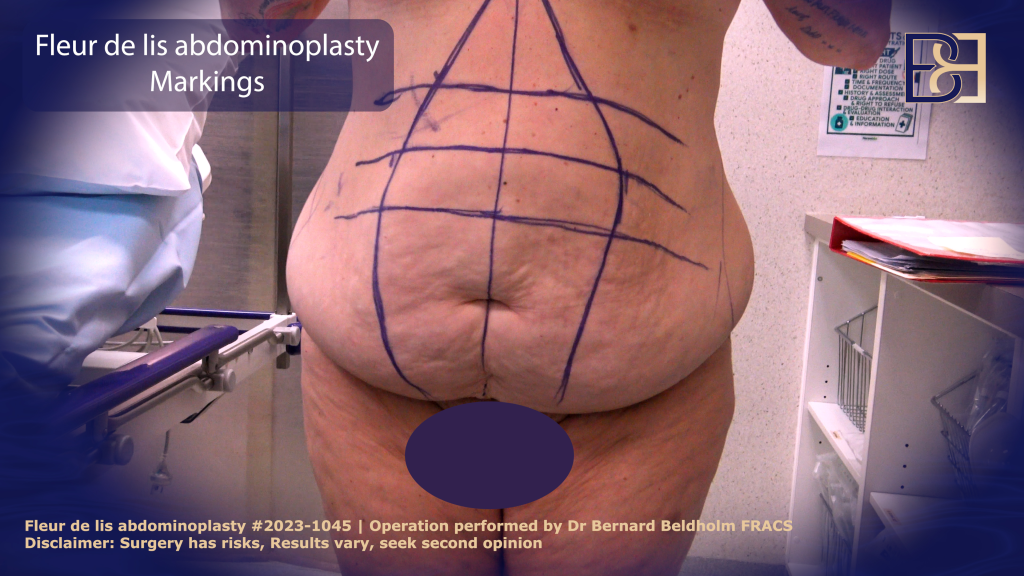
Fleur-de-Lis Abdominoplasty
Unlike standard abdominoplasty, which only ** skin laxity in the horizontal direction, Fleur-de-Lis abdominoplasty candidates are patients who lose weight after pregnancy with significant skin laxity and stubborn fat in the upper and lower abdominal region.
Fleur-de-Lis procedure involves creating an inverted-T incision on your lower abdomen, almost in the same location as the one made during the C-section.
The procedure requires me to make vertical and horizontal incisions to ** more tissue and skin in your abdomen, both vertically and horizontally. This technique is beneficial for cases where there is significant abdominal laxity. Please note that I will tighten skin after the surgery. The combination of weight gain and C-section makes an FDL a great option, though it will leave you with significant scarring.
The result is a well-contoured and flatter abdomen, a narrower waist, tighter skin, and a reduction in the visibility of stretch marks. This is because I will work even on deeper skin layers. Fleur-de-Lis also repositions your belly button (umbilicus), repairs separated muscles (diastasis recti), and ** other complications.

Disclaimer: Operation performed by Dr Bernard Beldholm. Adult content, surgery has risks; individual results vary, seek 2nd opinion. Please see the full disclaimer.
Similar to any surgical procedure, FDL has its risks, which include scarring, bleeding, infections, and sometimes procedure-specific complications. Scarring from Fleur de lis is more prominent because of the vertical and horizontal incisions made.
As much as you will have a better-contoured abdomen, the incision scars will be noticeable. Also, note that since I will be making longer incisions in your abdomen, your body will require a longer time to heal and repair the affected tissues.
I recommend Fleur-de-Lis to patients with significant excess skin and stubborn fat on the abdomen. I don’t recommend performing Fleur-de-Lis Abdominoplasty and Caesarean Section simultaneously. Though it is possible to combine a caesarean birth with abdominal body contouring, it is very risky.
A C-section is an invasive procedure which causes abdominal muscle weakness, fat accumulation, and skin redundancy. It would be best if you give your body ample time to recover before undergoing FDL surgery.
What Is the Cost of a Fleur-de-Lis Abdominoplasty?
A reasonable cost estimate of your FDL procedure with lipo includes $10,000 to $15,000 surgical fees, $3,000 to $7,000 anaesthetic fees, and $8,000 to $17,000 hospital fees. Note that these charges might be covered by your private or Medicare insurance cover.
How Long Do Results of a Fleur-de-Lis Abdominoplasty Last?
If you heed the guidelines I’ll provide, your Fleur-de-Lis tummy tuck results can last you a lifetime.
How Much Weight Do You Lose After a Fleur-de-Lis Abdominoplasty?
The amount of weight you’ll lose is significant. FDL ** skin laxity caused by significant weight loss or pregnancy, resulting in substantial weight loss.

Disclaimer: Operation performed by Dr Bernard Beldholm. Adult content, surgery has risks; individual results vary, seek 2nd opinion. Please see the full disclaimer.
Is Fleur-de-Lis Abdominoplasty Painful?
You’ll experience no pain during surgery because of the administered general anaesthesia. However, you can expect significant pain and soreness for the first few days. I will prescribe you some pain medication to help ease the pain.
Fleur-de-Lis Abdominoplasty Risks
Some risks of undergoing a Fleur-de-Lis abdominoplasty include wound infection, seroma, correction surgery, hematoma, bleeding, numbness, visible scarring, dehiscence, and tissue necrosis.
What FDL Surgery?
An extended abdominoplasty aims to recontour and reshape your abdominal structure, including the sides and lower back. It involves a longer horizontal incision that runs across the lower abdomen, typically from hip to hip, and may extend around the flanks and lower back. This allows for the removal of excess skin and fat from both the front and sides.
Fleur-de-lis ** significant skin laxity after major weight loss. It is suitable for patients who have undergone massive weight loss and have extensive skin laxity that cannot be ** by horizontal incision alone. FDL includes a vertical incision running from the lower chest to the pubic area, intersecting with the horizontal incision to form a “T” shape. The dual incision approach allows for the removal of a greater amount of excess skin, providing a more comprehensive tightening and contouring of the abdominal area, increase blood flow, and leaving an ideal body volume.
Download our short guide: “11 Important abdominoplasty techniques that you need to know about”
Belt Lipectomy (Body Lift)

A Belt Lipectomy is a body contouring procedure for post-pregnancy patients with excess ** skin and stubborn fat pockets around the beltline, including the abdomen, pubic area, flanks, lower back, buttocks, and thighs. A more complicated procedure, body lifts involve longer recovery periods and hospital stays than traditional or mini abdominoplasty.
C-Tuck
A C-Tuck is a procedure that combines a tummy tuck with a C-section, hence the name. Basically, a C-Tuck involves having two major and completely separate surgeries; one right after the other. Here’s what happens in a nutshell: A baby is delivered via a c-section, and then the OB team whisks the baby away. Then, plastic surgeons come into the operating room to remove excess skin and abdominal fat cells, possibly doing some liposuction in the process.
The most common candidate for this surgery is someone who’s already obese and has extra belly flesh that flaps down over the abdomen.
While this may seem like a good idea, this is an uncommon procedure that I do not recommend because of the risks and complications involved that can be easily avoided.
Why It’s Best to Wait
As your specialist surgeon, I recommend waiting a minimum of 12 months after your C-section before you can consider fleur-de-lis.
The incision made during C-section causes trauma and leaves a delicate abdominal wound on your abdominal muscle mass. It is best to give your body time to heal and recover before making another incision to the region. This way, you reduce the required recovery period, which would’ve been longer if you combined the two medical procedures.
Another reason why I do not recommend Fleur-de-Lis Abdominoplasty immediately or simultaneously is that it will limit your interactions with your child. This will affect your relationship with your newborn in two ways. First, you will be under the prescription of several pain medications, and this may affect breastfeeding. Second, the pain and delicate condition of your lower abdomen will limit interaction with your child.
The recommended 12-month waiting period is also a time to prepare mentally and physically for the Fleurs-de-Lis procedure. This abdominoplasty procedure is a major surgery for which you need time to prepare adequately. During this time, you can lose some post-pregnancy weight to attain a stable weight ideal for abdominoplasty. This technique helps reduce post-surgical complications, risks, and chances of surgery revision.
Some women insist on having both procedures done simultaneously. As much as there are cases where they have been successful, you should know the risks involved.
What are the Risks of a C-Tuck Surgery?
- Higher chances of developing fleur de lis surgical complications
- Longer recovery period
- Higher chances of getting unsatisfactory results
- It is very risky for the patient
Complications from Combining Fleur-de-Lis Abdominoplasty and C-Section
- Wound Dehiscence: The surgical incision made during your C-section needs time to heal. Lack of proper healing can lead to wound dehiscence, a complication in which the incision partially or fully reopens. This can be a result of the invasive nature of Fleur-de-Lis, which affects a larger portion of your lower abdominal area.
- Wound Infection: Both surgical procedures require incisions made leaving a wound. If I combine the two, the result is a bigger incision wound and this increases the chance of bacteria contamination if you don’t take care of it well.
- Skin Necrosis: This is a condition in which the skin cells located around the healing wound die due to lack of adequate oxygen. This leads to a longer recovery period.
- Haematoma: This is the accumulation of clotted blood on the wound region.
- Bad Scarring: The invasive nature of both surgical procedures might result in thick hypertrophic, bad scarring, and/or extended scars.
- Seroma: A condition where the lymphatic fluid accumulates around the healing wound.
- Thrombosis: Blood clots forming in your blood vessels.
- Outward-Bulging Abdomen: Both surgeries strain your abdominal muscles, potentially leading to unsatisfactory results and seroma formation and affecting your wound healing process.
- Outward-Bulging Umbilicus (Umbilical Hernia): This is a condition where abdominal muscles give in to the strain caused by the two surgeries. The muscles allow abdominal organs or muscles to protrude outward through this weakened area, especially around your belly button.
- Skin Redundancy: Excess abdominal skin removal creates tension in the lower abdomen, leading to inadequate wound closure. This is a dangerous condition that will require further corrective measures for the skin after weight loss.

Benefits of Fleur-de-Lis Abdominoplasty After a Caesarean Section
When you wait for 12 months to have the body contouring, the benefits of an FDL are immense. They include:
- Enhancing the appearance of a C-section scar
- Removing excess and redundant post-pregnancy abdominal skin
- Repairing separated abdominal muscles (diastasis recti)
- Enhancing your abdominal contour
- Tightening loose abdominal muscles
- Removing stretch marks
- Improving belly button appearance
- Treating urinary incontinence
- Enhancing posture
- Reducing back pain
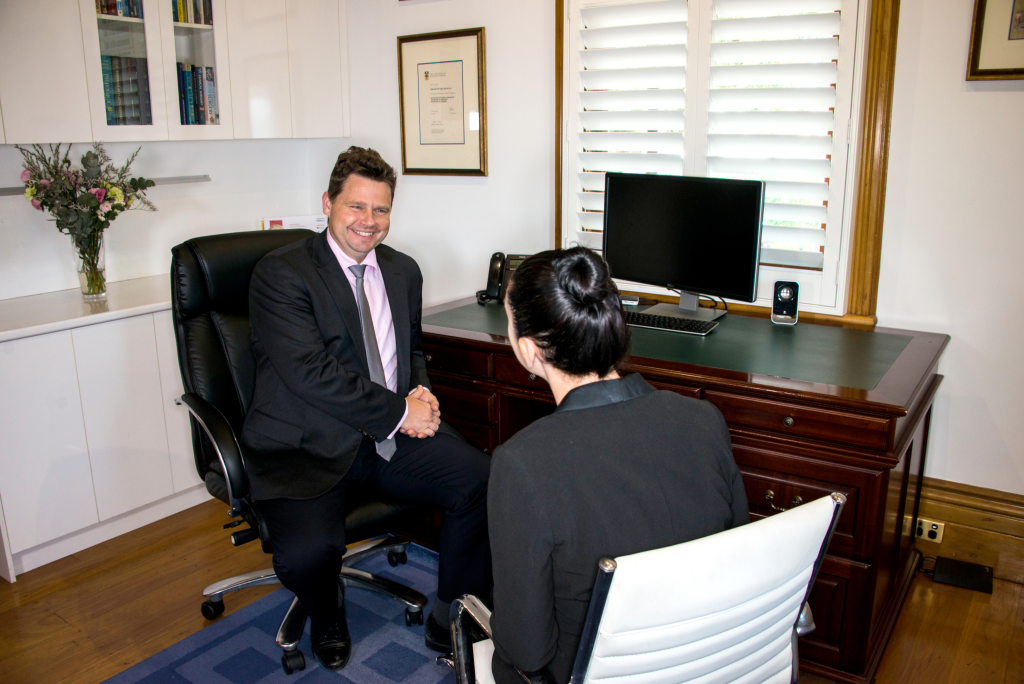
Dr. Beldholm’s Final Thoughts
Fleur-de-Lis effectively ** skin elasticity and separated abdominal muscles caused by C-sections. However, this doesn’t mean it should be done immediately or simultaneously.
A C-Section is tough on the body, requiring ample time to recover. This is why I recommend that you give your body time to regain its shape and strength by allowing the affected tissues to heal. Take this time to connect and provide the utmost care for your newborn before considering a fleur de lis procedure.
After 12 months, feel free to book an appointment with me to plan your Fleur-de-Lis surgery. You might find that you have lost some post-pregnancy weight, and this will require that I reevaluate the excess loose skin after weight loss and your overall condition to make an informed decision.
Book your appointment online now
Resources
- Chen, C. E., Kao, Y. C., & Ku, S. H. (2023). Fleur-de-lis Mini Abdominoplasty Access in Radical Resection of a Large Abdominal Wall Desmoid Tumour. Plastic and reconstructive surgery. Global open, 11(10), e5362.
- Friedman, T., O’Brien Coon, D., Michaels V, J., Purnell, C., Hur, S., Harris, D. N., & Rubin, J. P. (2010). Fleur-de-Lis abdominoplasty: a safe alternative to traditional abdominoplasty for the massive weight loss patient. Plastic and reconstructive surgery, 125(5), 1525–1535.
- Ali, A., & Essam, A. (2010). Abdominoplasty Combined with Caesarean Delivery: Evaluation of the Practice. Aesthetic Plastic Surgery, 35(1), 80–86.


